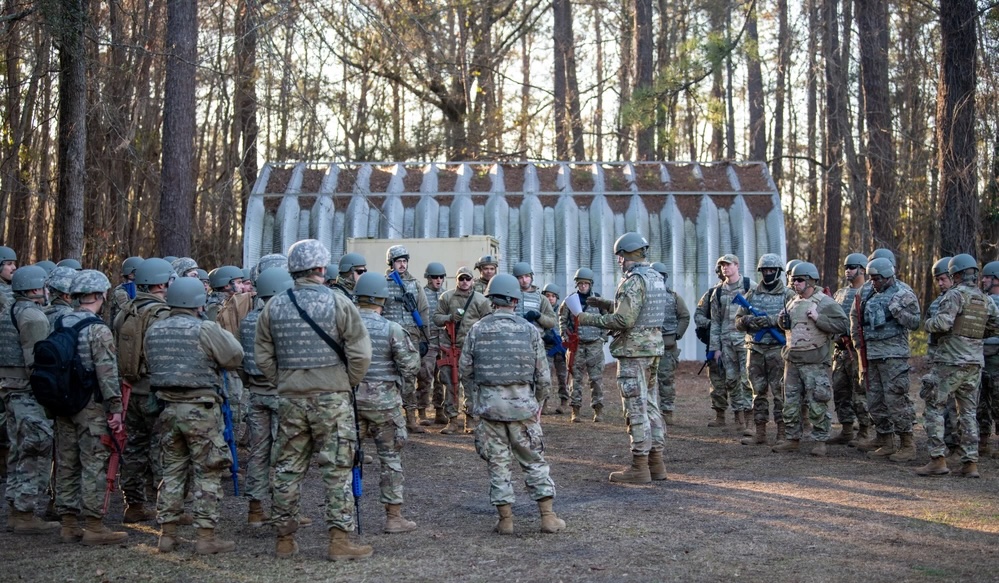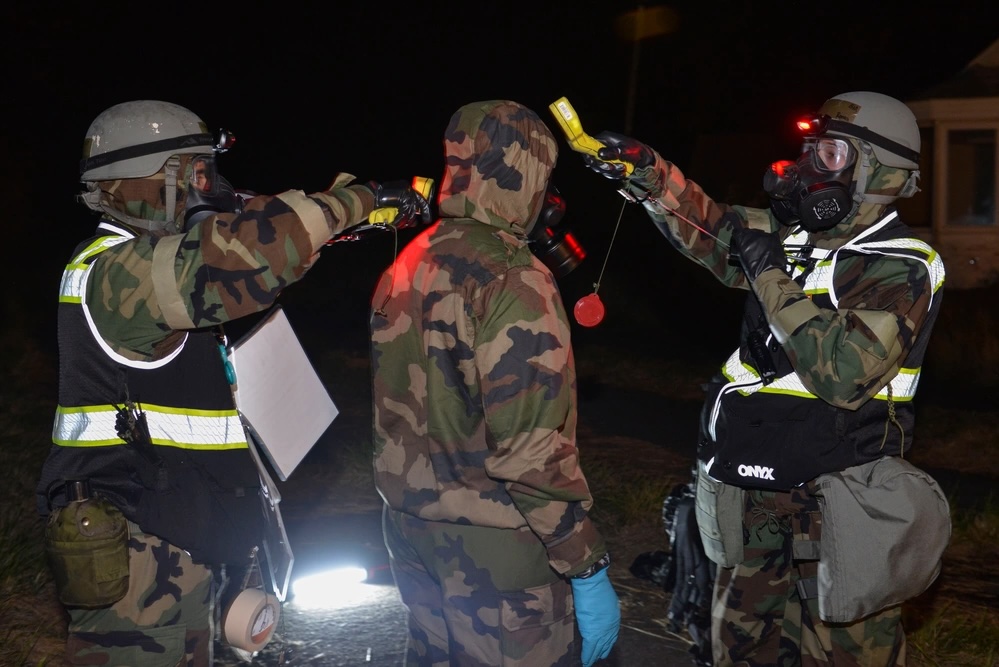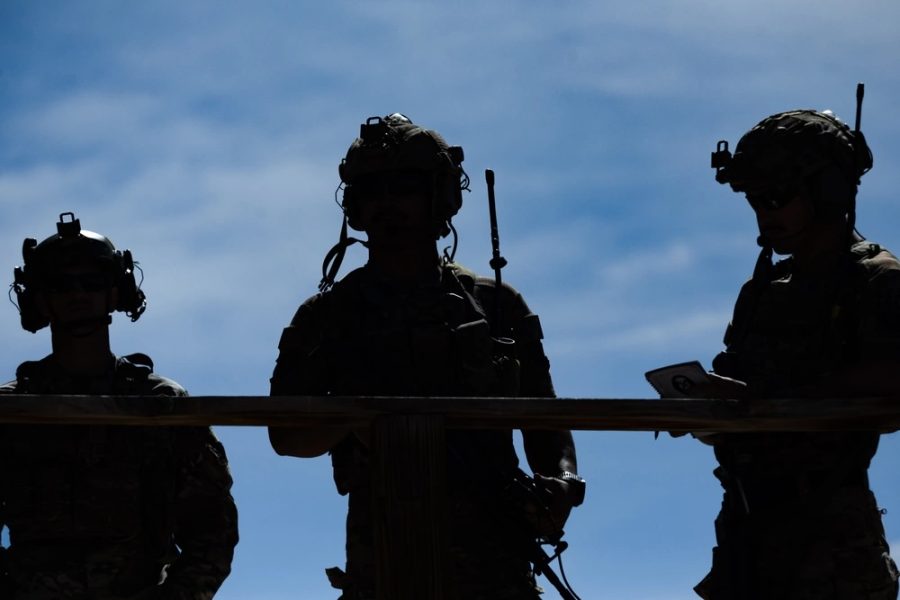From 2016 to 2019, Brig. Gen. Jeff Hurlbert was in charge of investigating non-criminal misconduct by senior Air Force officials. But he had a problem—he noticed that subordinates often knew their leaders were doing something wrong, but there was no language in Air Force standards to characterize it.
“It’s a challenge for someone who believes they are being mistreated but doesn’t know how to articulate it,” Hurlbert, now retired, told Air & Space Forces Magazine. “It’s also a challenge to investigate something where there is no standard, so how do you measure whether or not the alleged thing happened?”
The alleged thing is often called toxic leadership, a term frequently used to describe leaders who psychologically abuse their subordinates. Col. Jason Lamb, then using the pseudonym Col. Ned Stark, sparked renewed interest in the topic from 2018 to 2020 when he wrote a series of essays on improving Air Force officer promotion and leadership development.
“We have some great leaders in our Air Force, but we need to do a better job of finding and developing more of them while weeding out toxic leaders before they have a chance to do significant harm to our Airmen and missions,” Lamb wrote in one essay.
A recent analysis of Air Force suicide deaths in 2020 also cited toxic leadership as adding “substantial stress to decedents’ lives.” But despite the widespread concern about toxic leadership, there is no plan to address it or even agree on what it is.
“I’m actually fascinated by how many captains or majors said their past bosses or current boss is toxic,” said Col. Michael Boswell, an instructor at the Air Command and Staff College. “But when you kind of peel the onion back and have discussions with them, it was just that their bosses were maybe a hard charger … or they truly had toxic leaders.”
A former chief prosecutor of the Air Force voiced a similar opinion.
“It’s just all over the place what’s considered toxic or not toxic leadership,” said retired Col. Don Christensen. “A lot of times, it seems like it’s just whether whoever’s making the call likes you or not.”

The Air Force needs to define toxic leadership to prevent such confusion, wrote Bowsell, Hurlbert and two other experts, Col. Danielle Stringer and Royal Canadian Air Force Maj. Steven Barfoot, in a recent essay for Air University’s Air & Space Operations Review.
“From a practical perspective, there needs to be a shared understanding of toxic leadership,” they wrote. “The lack of a cohesive definition and understanding of toxic leadership enables toxic leaders to escape responsibility for their damage to the organization and its members.”
This is the definition the authors came up with:
“A toxic leader is an individual who utilizes negative, hostile, or destructive techniques or tactics that systematically degrade Air Force organizational objectives, readiness, climate, and/or unit morale. Toxic leaders display a host of counterproductive management and motivation styles; examples include and are not limited to fear, ridicule, belittling, bullying, and/or misplaced or unwelcome sarcasm.”
The official Air Force definition does not have to be the same, they wrote, but there would be at least three benefits to creating one
Protect Subordinates and Whistleblowers
Knowing the definition of toxic leadership allows subordinates to differentiate toxic leaders from bad or incompetent ones.
“Whether you’re a staff sergeant, a lieutenant, or a colonel, this gives you something to hang your hat on and say, ‘Look, it’s not just that I don’t like this kind of leadership, it’s that our Air Force has said we won’t tolerate this kind of leadership,’” Hurlbert said.
“Your people don’t have to love you, leadership is not a popularity contest,” he added. “The measure is ‘when does your conduct move into something that is abusive, unnecessary, uncalled for? Is it a personal attack, is it done in public, is your conduct pervasive?”
A definition could also help whistleblowers, who would be better served by the Whistleblower Protection Act because they would have an actual standard to point to as being violated, he said. Boswell added that while cultures vary across the Air Force’s wide range of career fields, a standard helps identify toxic leadership relative to that environment.
“You may have special operations guys where it’s OK for someone to yell and be that way and the troops are still good with it,” Boswell said. “You may have that exact same individual in an office setting and their words can completely destroy the organization.”
Provide a Standard for Peers
Nearly all the senior leaders Hurlbert investigated for toxic behavior had been leading that way their entire careers, he said.
“For many of them, it was just their leadership style and they were never corrected,” he said. “There wasn’t really a mechanism to do that, because they were getting results and there was no prohibition against it.”
Indeed, Boswell cited the phrase “toxic leaders are not born, they’re not made, they’re promoted,” he said. “We reward bad behavior, and that bad behavior becomes worse over time.”
Boswell and his co-authors cited the organizational psychologist Edgar Schein, who observed that the goals and structures of an organization often create gaps or dysfunctions where toxic leaders emerge. For example, achieving the Air Force’s function of projecting airpower globally might come at the cost of functions such as the psychological welfare of Airmen.
“Individuals are rewarded for the operational and tactical outcomes they bring to the organization despite their behavior or how the outcome was derived,” they wrote. “Supervisors of the toxic individual often do not see the questionable behavior, only the mission results.”
Changing the institution involves teaching leaders what constitutes unacceptable behavior, Hurlbert said, starting with early leadership instruction such as Airman Leadership School and the Air Force Academy. A definition would help with early instruction and later on in an Airman’s career, when peers and supervisors can recognize toxic behavior and correct it.
There is a bell curve of leadership styles, Hurlbert said. On either side of the curve are a small number of leaders who will always do the right thing or wrong thing, but the majority, the ones in the middle, “can be influenced by standards, enforcement, and penalties,” he said. “If we could influence those people in the middle, that’s a victory, and I think that’s what a standard does.”

Enhance accountability and rehabilitation
In his research on past misconduct, Boswell noticed investigators had to do “legal gymnastics” to identify what leaders were doing wrong absent a standard definition of toxic leadership.
Having a definition would help investigators flag toxic leadership, Hurlbert said, but the main point is to proactively correct bad behavior before an investigation is needed.
“The reason to do this is absolutely not to make the investigations easier. Those ought to be hard,” he said. “It really is ensuring that we are best postured to get the leadership behavior that we want. The collateral benefit will be if there is an issue of toxic leadership, we can actually identify it, we can measure it, and we can hold people accountable.”
It could even save leaders in need of a course correction.
“When we typically use the word toxic leader, we think of someone that needs to be removed,” Boswell said. “But my argument is that there are varying degrees of toxicity, and you have to be able to deal with them appropriately. If you catch them early, you may be able to change the organization and help that person rehabilitate. Because not all toxic leaders are bad people.”
Can It Be Done?
Toxic leadership is nothing new, so why doesn’t the 76-year-old Air Force already have a definition? Boswell noted that cultural expectations of leaders have changed over the years, with younger generations of Airmen often having “a more nuanced appreciation” of leadership than their predecessors. Defining toxic leadership is also very difficult.
“Toxicity means different things to different people,” he said. “The definition that you saw was the result of Hurlbert and I going through many conversations and many different documents to really pinpoint what that looks like. It took us a long time to do that.”
Indeed, the authors could not find a definition of toxic leadership in any other service’s standards and regulations save for the Army, which “led the way” by first adopting a definition in its regulations in 2017, they wrote. Even so, neither that definition nor an updated version in 2019 did enough to distinguish bad leaders from toxic ones, lay out the traits that make a leader toxic, or define their impact on an organization, they said.
If Air Force officials decided to adopt a standard definition for toxic leadership, it would not take much effort to publish one, Hurlbert said. The hard work would be making sure Airmen follow it.
“The cultural change will take time,” he said. “The standard is kind of a foundation, but then we’ve got to actually live by it. We’ve got to promulgate it and expect it and enforce it.”
The adaptation period would be difficult: Hurlbert expected it would look similar to the years after 2012, when Congress updated the rules for reporting sexual harassment in the military.
“The first thing we’d probably see is a lot more complaints initially, because people would know they would be listened to and protected,” he said.
Completely eliminating toxic leadership from the Air Force may be impossible, the authors wrote, but a standard definition can form the basis of a plan to reduce it.
“You can have lots of different leadership styles and we ought to embrace productive leadership styles,” Hurlbert said. “But there is a type of leadership that we ought to preclude, because it’s abhorrent to our culture. It is not consistent with the way that we think we ought to treat people.”
